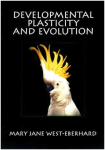I clicked on 4 Black Eggs Have Surfaced From the Dark Heart of the Ocean—With Alien Creatures Inside. How could I not? Fortunately, it was a truthful title. An ROV dived 6200 meters beneath the Pacific Ocean and found strange black eggs attached to a rock, and brought some to the surface (the operators have presumably never seen a horror movie. Don’t harvest the mysterious black eggs ever, and don’t bring them back to the lab.)
“Under a stereomicroscope, I cut one of them, and a milky liquid-like thing leaked from it; after blowing the milky thing with a pipette, I found fragile white bodies in the shell and first realized that it was the cocoon of…”
It was flatworms. Platyhelminths.
Niiiice.
Not at all Lovecraftian or scary, though.










